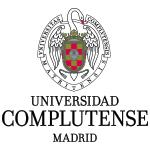Modelo de evaluación del riesgo en la entrada y difusión de agentes patógenos que afectan a las abejas en España
Artículo de divulgación publicado en Revista Complutense de Ciencias Veterinarias
1 de enero de 2008
Bulboa MC., Martinez-Aviles M. y Sanchez-Vizcaino JM..
From the appearance worldwide of the phenomenon called Colony Collapse Disorder (CCD), the studies have been intensified to determine which are the reasons that produce it.
Likewise, the worry for the sanitary state of the beehives has gone in increase due to the fact that a beekeeping market exists more competitive economically, and to that the commercial activities that involve the dealing bee product have made increase the risk, of a considerable way, of exotic diseases of honeybees.
Our principal aim is to study the sanitary state and the prevalences of the bees diseases
present. The evaluation of risk here presented includes the identification of the possible routes of entry and spread of the pathogenic agents, from the information obtained of surveys, realized for such an effect, to the Spanish beekeeping, as well as of scientific available bibliography.
Key words: beehives, sanitary state, diseases, routes of entry
 | Servicio de Inmunología Viral y Medicina Preventiva (SUAT). Centro de Vigilancia Sanitaria Veterinaria (VISAVET). Universidad Complutense (UCM). |
 | Departamento de Sanidad Animal. Facultad de Veterinaria. Universidad Complutense (UCM). |

